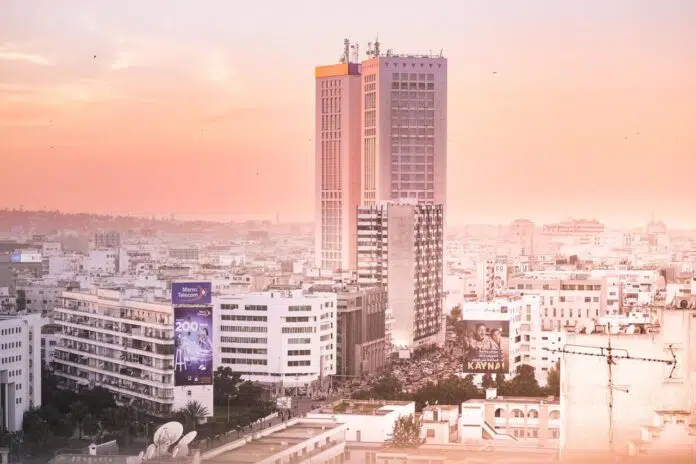If you plan to visit this magical land! Here is what you must know about Morocco country:
known to the Arabs as ” Al Maghreb al Aqsa”, the farthest land of the setting sun; Morocco’s dramatic landscape stretches from the shores of the Mediterranean Sea and the Atlantic Ocean to the waves of the Saharan dunes.
Geography of Morocco
Its geography is dominated by the gigantic surge of three mountain ranges, the Riff along the northern coast and the Middle and High Atlas; which run across the middle of the country, separated by rich and surprisingly green valleys. Only south of the Atlas does it flatten out into the stony and sandy Sahara Desert. It is a land of great contrasts and variety, from the snow and ski resorts of the high mountains to the Moroccan wild beaches of the West Coast; from the intense activity of the towns to the immense emptiness of the desert. New towns, with discotheques and girls in mini-skirts exist without contradiction alongside almost medieval “medinas” where most live according to ancient traditions and women hide behind veils.
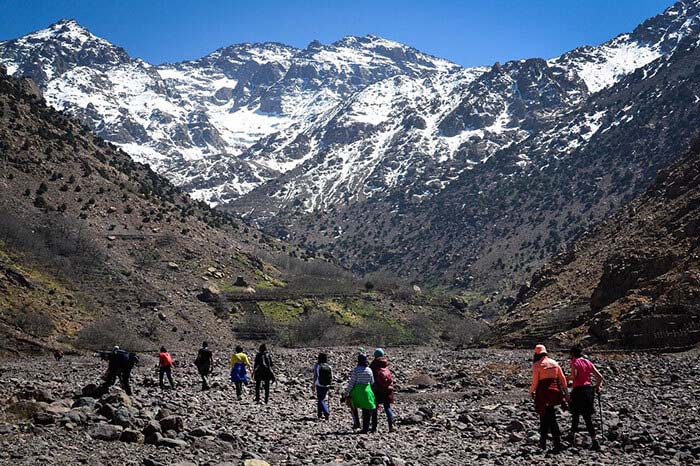
Must Read: High Atlas Mountains in Morocco | Where the Mountains are law.
What kind of country is Morocco? “Location, people, culture…”
Morocco country is only a half-hour boat passage from Europe but as soon as one steps on its shore there is no doubt that it belongs to the African continent. It is a magical land of breathtaking colors, exotic smells, and spicy flavors. Everything is very, very different.
Perhaps its greatest joy is its people. Ethnic diversity, united by a majority of indigenous Berber tribes and a common religion, Islam, has left its indelible mark on the culture and art of Morocco. The people are incredibly friendly and hospitable. The poorest peasant will not hesitate to share his humble meal with a stranger (probably a delicious Moroccan vegetarian couscous). Chances are that the meal will be taken in his simple mud dwelling, sitting on brightly colored Moroccan carpets that most tourists would die for!
What is Morocco known for?
Morocco is also a rapidly developing country and “progress” is filtering through to the most remote areas. It is quite a shock to see a young Tuareg on the edge of the desert get a mobile phone out of his great blue robes. “Internet cafes” can be found even inside Medinas, and it is not rare to see television dishes on apparent piles of mud in a desert oasis or on the roof of a stone house lost in the High Atlas. Ancient kasbahs have now been turned into magnificent guest houses with all “mod-cons” and the “riads” of the Imperial Cities, traditional courtyard houses, have become beautiful B&Bs. The weary traveler will appreciate this comfort, not to mention the warm welcome and a sweet cup of freshly brewed mint tea, after a hard excursion in the dusty hamada, or a hot day visiting the historical sights of Marrakech.
Interesting facts about Morocco country! “thousand and one nights”
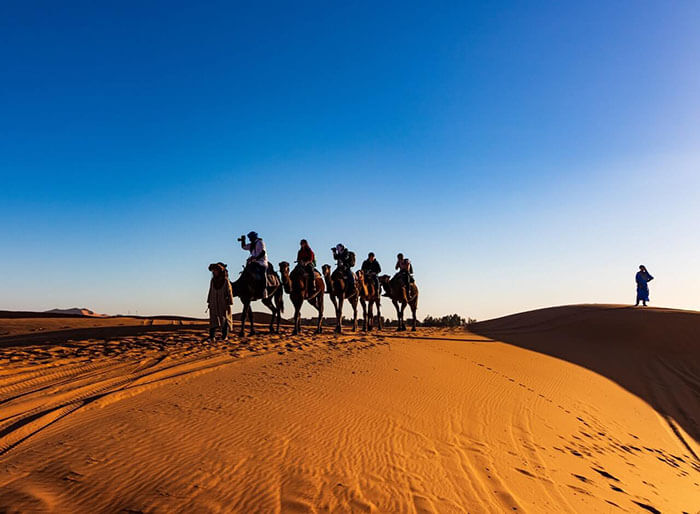
There are things to see and do everywhere, and for every taste. The incredibly diverse landscape offers one breathtaking sight after another. You can surf on giant Atlantic rollers, enjoy magnificent sandy beaches, or ski in the Atlas resorts. You can drive through the hamada in a four-wheel-drive or explore it at a lower pace on the back of a camel. There are Roman ruins, such as the fascinating town of Volubilis, timeless mud fortresses proudly erected between elegant palm trees in the oases of the south; and intricately decorated palaces of Andalusian tradition built by the great dynasties which ruled over much of Spain as well as vast tracts of north-western Africa for many hundreds of years.
The working of wood, metal, copper, wool, linen, stone, and clay has been a tradition for centuries and artisans offer an almost endless variety of artistic and utilitarian objects in the markets. Browsing through the souks in Marrakech and Fez is simply fascinating. Carpet-weaving is one of the oldest traditions. But beware! One mesmerizing Moroccan rug after another will be artfully rolled out in front of your eyes until you can no longer resist the urge of possessing at least one of them!
You will probably take back home a lot of beautiful souvenirs but the best ones will be your memories of this magical country, the feeling of having stepped for a little while into the Arabian legends of a thousand and one nights.
Must Read: 10 Best Places To Visit in Morocco in 2021
About Morocco country! “Great diversity”
With more than 2,000 kilometers of coastline and separated from the Sahara Desert by three mountain ranges, Morocco boasts some of the most beautiful countrysides in Africa. The Atlantic Coast is often wild, with beautiful sandy beaches alternating with spectacular jagged cliffs. In the Rif Mountains along the northern Mediterranean coast, the wettest part of Morocco, the indigenous vegetation is very similar to that of Andalucía, mostly holm oak and various species of pines. Large parts of its more remote areas have a cash crop too, these days, being dedicated to the cultivation of “kif” (marijuana). Please take care, the penalties for possession are very harsh in Morocco.
The Middle Atlas, running southwest from the Rif, rises to 3,290 meters and has been called the “Switzerland of Morocco”! With wooden houses in elegant mountain resorts resembling Swiss chalets amongst tall pine and cedar forests. The High Atlas is the most spectacular and varied of the three massifs and is a wonderful trekking country. Between vast, rocky peaks (the highest, Jebel Toubkal soars up to 4,167 meters) there are deep valleys and wide plateau’s. Its southern slopes drop down to the emptiness of the Sahara.
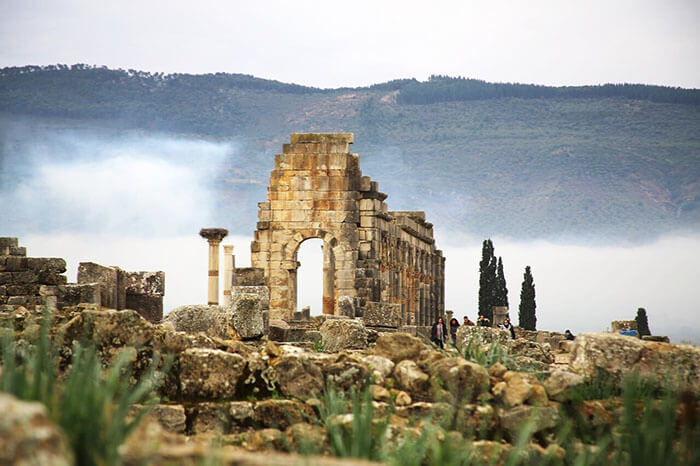
The lowlands in the central part of the country are mostly dedicated to agriculture, with large areas of cereals and olive trees. Around Essaouira, the healthy oil from wild-looking argan trees is extensively used and enjoyed in Moroccan cooking. Finally, there is the inhospitable desert region of the south and south-east, where the vast pebbly plateau of the Hamada; cut deeply by oases planted with date palms and lush gardens, turns inexorably into the endless sand dunes of the Saharan Erg on the Algerian and Mauritanian borders.
Morocco weather “Temperate and Climate”
With its incredible diversity of altitude and locations, Morocco’s climate varies greatly depending on where you are, and when. The coastal areas enjoy mild weather throughout the year, tempered in the hotter summer months by sea breezes. Moderate rainfalls diminish progressively from the north to the south and from the west to the east, generally falling from November to January and sometimes until March.
The interior has a continental climate, hot and dry most of the year, with temperatures easily reaching 40ºC in summer which becomes stifling when the chergui, the desert wind from the Sahara, is blowing. In the central lowlands, the cooler months from October to April are more popular among visitors. This time of year is pleasantly warm-to-hot (25 – 30°C) during the day and cool-to-cold (around 10 – 15°C) at night. In the desert, temperatures can drop dramatically at night, due to the lack of humidity. Be prepared with warm clothing if you are planning to spend a night in a desert camp!
In the high mountains and surrounding areas, it can get as cold as minus 20ºC in the winter and snow often blocks mountain passes. Even in the summer, evenings can be cool.
Must Read: When Is The Best Time To Visit Morocco? | Full Weather Info
Morocco history
The native people of Morocco are the Berbers, or Imazighen (men of the land), an ancient nomadic race who, throughout history, have seen their country invaded by a succession of foreign powers: the Phoenicians came in the 12th century BC; followed by the Carthaginians and then the Romans, who remained here for six centuries during which many cities were founded, and the Berbers of the coastal plains became city dwellers.
Divided into clans and tribes, the Berbers have always jealously guarded their traditions which have helped preserve one of Africa’s most fascinating cultures. After invading Morocco in AD682, the first Arab rulers, the Idrisid dynasty, ruled for 150 years during which time Christian and pagan inhabitants of the land converted to Islam. Arab and Berber dynasties succeeded them, notably the Almoravids (1062 – 1147) who founded Marrakesh as their capital, and the Almohads (1147 – 1258). Moors and Jews expelled from Spain settled in Morocco during this time bringing with them their Andalusian fine handicraft traditions. The cities of Fez, Marrakesh and Rabat reached an incredible peak of cultural development.
After a number of short-lived and ill-fated dynasties rose and fell, the Alawite family secured a stranglehold in the 1630s that remains firm to this day. This pragmatic dynasty managed to keep Morocco independent for more than three centuries but by 1912 France occupied virtually the entire country. Spain clung to a small coastal protectorate and Tangier in Morocco was declared an international zone. The first French resident-general, Marshal Lyautey, respectful of the Arab culture, built French Villes Nouvelles (new towns) alongside the old ones. He made on the Atlantic coast Rabat the new capital of Morocco and developed the port of Casablanca.
Arabs, Moors, and Berbers of Morocco
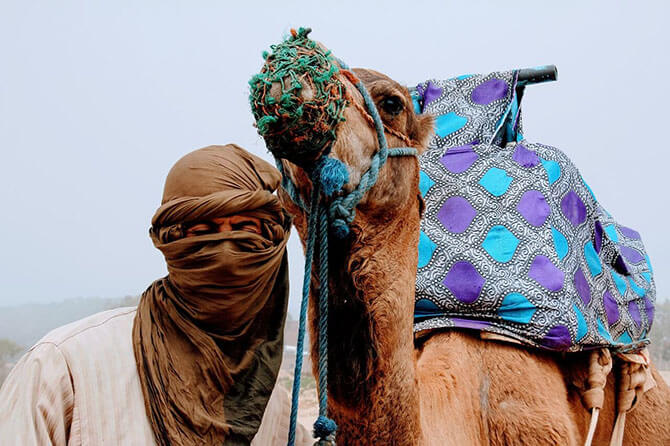
In Morocco country, Berber tribes are to be found predominantly in the mountain areas and parts of the desert, throughout the country. They are peasants, tradesmen, and artisans, with their own language divided into three dialects: Riffian (in the Rif Mountains), Tamazight (in the Middle Atlas), and Chleuh (in the High Atlas).
Ethnic Arabs who arrived with the first invasion in the seventh century are a relatively small part of the population and tend to gather around the main towns. Many are businessmen or hold positions in the Administration. On the other hand, a large number of Muslims expelled from Andalusia in the 15th Century made their home in Northern Morocco and have had a strong influence on its culture.
Must Read: Berbers of Morocco | Origin, history, culture, lifestyle …
In the desert, there still live a few of the famous nomadic Touaregs, although most of them roam deeper in the desert regions of Algeria, Mauritania, and Mali. They are the original“Moors” (people of Mauritania), also known as Blue Men because of the color of their clothing and the fact that the blue dye which they use leaves a blue tint on their skin. Some even paint their faces blue to repel flies. They are proud and independent people of Berber descendants divided into tribes and casts, “Touareg” being a general term meaning “traveler”. Because of their fierceness, their deep knowledge of the desert, and their nomadic habits they have always managed to retain their independence from foreign invaders. Their main wealth is their camels.
Arabic is the official language in Morocco but it is not uncommon to meet older people in small villages who have little contact with the outside world and speak only Berber. Most educated Moroccans speak French, but now many teenagers prefer to learn English. In the main tourist centers, it is not rare to meet somebody who speaks French, Spanish, English, Berber, and Arabic, with a bit of Italian and German thrown in. At the very least they will know enough of these languages to take you to a friend’s shop or, of course, to sell you a carpet!

